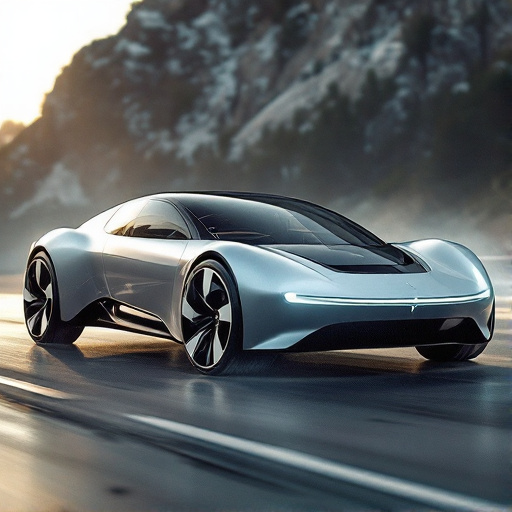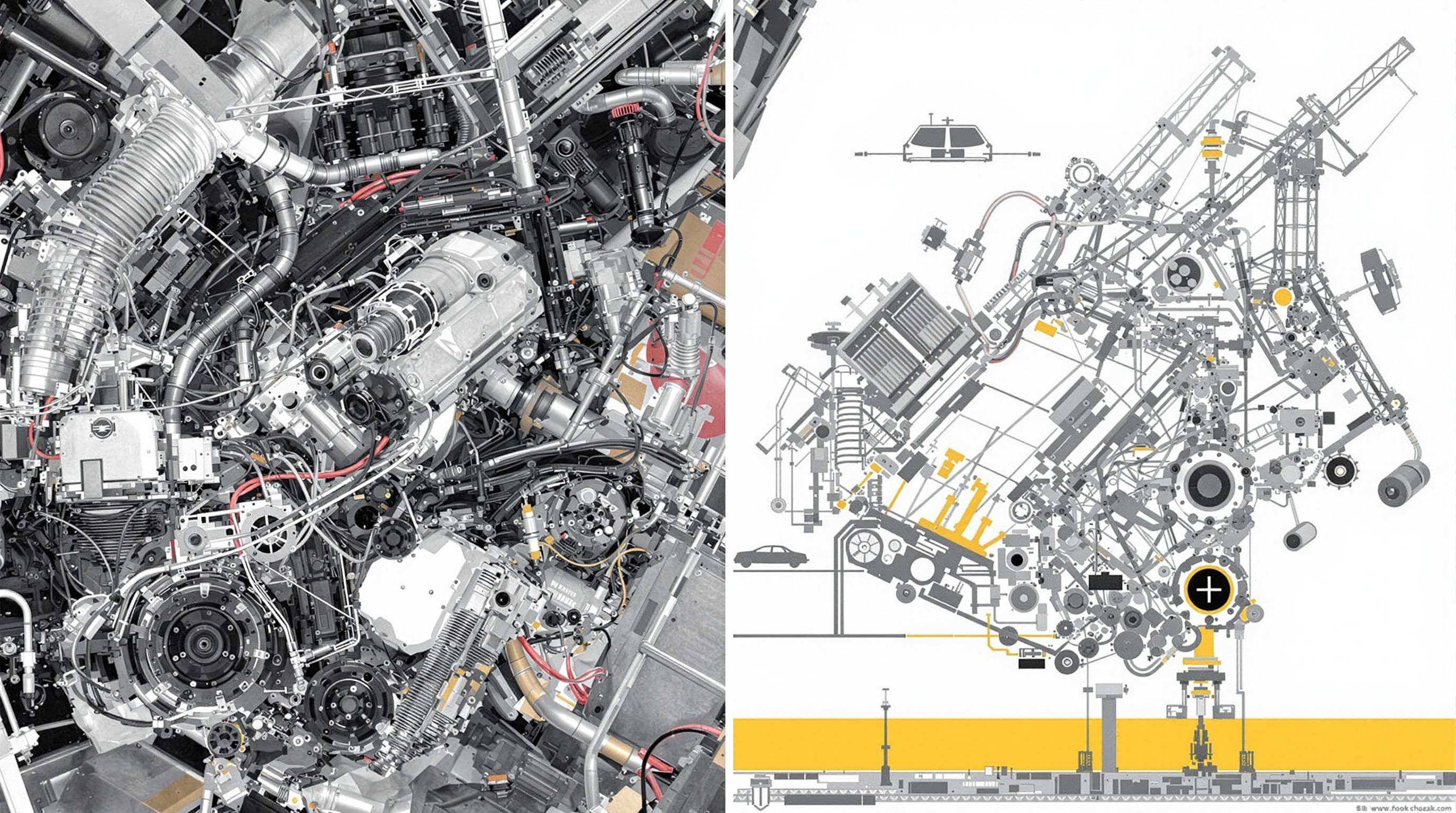Related Articles
- Unveiling the Unthinkable: How Your Social Media Posts Could Impact Your Car Insurance Premiums
- "From Showroom to Social Media: How Dealerships are Becoming Digital Storytellers in 2023"
- "From Showroom to Stream: The Rise of Virtual Reality Test Drives at Dealerships"
- Revving Up Sales: How Virtual Reality is Transforming the Dealership Experience for Shoppers and Sellers Alike
- Selling Experiences: How Dealerships Can Transform into Immersive Automotive Entertainment Hubs
- The Surprising Impact of Your Credit Card Habits on Car Financing: What You Didn't Know!
The Secret Lives of Electric Cars: Surprising Facts That Will Shock Even the Most Savvy Motorheads
The Secret Lives of Electric Cars: Surprising Facts That Will Shock Even the Most Savvy Motorheads
Electric cars have a secret life filled with surprising facts that can astonish even seasoned car enthusiasts. From their environmental impact to the technology that powers them, you may be in for a surprise.
The Rise of the Electric Vehicle (EV) Revolution
As of 2022, electric vehicles have started to corner the automotive market significantly, accounting for about 5% of new car sales globally, up from 2.5% in 2019 (International Energy Agency). This surge in popularity is primarily driven by younger generations who are increasingly concerned about climate change and environmental sustainability. But what lies beneath the shiny surface of these electric marvels?
Charging: More Than Just Powering Up
Did you know that charging an electric car can take longer than filling a gas tank? The average fast charger takes around 30 minutes to charge a battery to about 80%. However, the beauty of this process is that while waiting, drivers can often find other activities to engage in, like grabbing a cup of coffee or catching up on their favorite show on a streaming service—talk about multitasking!
Battery Lifespan: A Surprising Investment
Battery longevity often comes as a shock to new EV owners. Tesla’s battery technology has improved to the point where most cars can last over 300,000 miles before needing a replacement. This fact alleviates fears regarding battery degradation in the long run. As Elon Musk famously quipped, "You may never buy another car again." However, a new battery can cost anywhere from $3,000 to $7,000, depending on the model (Tesla, 2021).
Environmental Impact: A Double-Edged Sword
While electric vehicles significantly reduce urban air pollution, the manufacturing process of lithium-ion batteries is not without its critics. According to the Green Science Policy Institute, over 50% of CO2 emissions during the car's entire lifecycle come from the production phase, mainly due to mining minerals needed for the batteries. So while driving greener may feel good, it's essential to be aware of the larger environmental picture.
Real-World Examples: The Case of Norway
Take Norway, for instance. The country aims to have all new cars be zero-emission by 2025. They have successfully electrified a significant portion of their vehicle fleet—over 54% of new car sales in 2020 were electric! The Norwegian decision-makers heavily incentivized this shift with benefits like reduced taxes and toll exemptions, demonstrating a tangible path for other countries to follow.
Myth-Busting: The Range Anxiety Dilemma
Range anxiety remains a popular myth around electric cars. Did you know that the average American drives only about 29 miles a day? (U.S. Department of Transportation) With most electric cars now boasting ranges of over 200 miles per charge, the concern is increasingly unfounded. Many drivers actually find their electric cars to be more convenient, as they can charge overnight at home, effectively "refueling" while they sleep!
Hidden Technologies: The Brains Behind the Beauty
Electric vehicles aren’t just about simple battery packs; they feature cutting-edge technologies like regenerative braking. This complex system allows the car to capture and store energy typically lost when braking, extending the vehicle's range by up to 20%. It’s almost like having your very own energy guru on board! This gives you the perfect excuse to accelerate into eco-friendliness without compromising performance.
Hydrogen Fuel Cells: The Unsung Heroes
While most discussions revolve around battery-powered electric cars, hydrogen fuel cell vehicles deserve some spotlight. Companies like Toyota and Hyundai are investing heavily in hydrogen technology as a clean alternative to batteries. Unlike traditional EVs, hydrogen fuel cells emit only water vapor. So, in a way, these cars are like driving around in a mini water factory—talk about a refreshing take on the usual concept of transportation!
Graphene Batteries: The Future is Now
Imagine batteries that charge in a fraction of the time and last much longer—sounds like science fiction, doesn’t it? Enter graphene batteries. This cutting-edge technology is under development and could potentially replace the lithium-ion batteries we use today. With the potential to charge in minutes and a lifespan extending well beyond current models, graphene batteries may redefine what we expect from electric vehicles (The Journal of Physical Chemistry, 2021).
Cost Comparison: Are They Worth It?
Buying an electric vehicle often translates into long-term financial benefits. Electric vehicles typically have lower maintenance costs than their gas counterparts because they have fewer moving parts. Gasoline engines have around 2,000 individual components, while electric vehicles boast about 20. But upfront costs can deter some buyers; the average new electric vehicle cost is around $54,000, compared to about $46,000 for gasoline vehicles (Edmunds, 2021). However, tax incentives and lowering fuel costs can make EV purchases more appealing over time.
Consumer Behavior: Shifting Mindsets
Interestingly, studies have shown that electric vehicle owners tend to be more environmentally conscious than those with gasoline cars. A survey from AAA found that 66% of potential EV buyers are influenced by sustainability concerns, while only 37% prefer internal combustion engines (AAA, 2020). This shift signifies a broader transition in how consumers are approaching mobility, highlighting the importance of addressing climate-related issues.
The Future of Electric Vehicles: Moving Forward
The landscape of electric vehicles is constantly evolving, and the future looks bright. With companies committing to full electrification by 2030, the dream of a sustainable transportation system is becoming more attainable. Major automakers like General Motors and Ford have laid out plans to transition their fleets entirely to electric, underlining the seriousness of this transformation.
Autonomous Features: The Sky's the Limit
Self-driving technology is another frontier within the electric vehicle industry. Cars like the Tesla Model S and Waymo's vehicles harness both electric power and advanced algorithms to navigate roads. In fact, Tesla continues to push the boundaries, with their Full Self-Driving (FSD) package promising to revolutionize the way we think about and interact with our cars.
Community Engagement: Changes on the Ground
As electric vehicles grow in popularity, new community infrastructures are being designed around them. From dedicated EV parking spaces to charging stations popping up across urban centers, cities are adapting to accommodate this shift. Efforts such as the “EV Charging Program” by local governments not only support owners but encourage others to make the switch—proving that community engagement is crucial to making electric vehicles the norm rather than the exception.
Conclusion: A New Era of Mobility
In wrapping it all up, electric cars are not just a trend; they represent a shift in how we view transportation, environment, and technology. Whether you're a grease-stained mechanic or a tech-savvy millennial, understanding the secret lives of electric vehicles can help you appreciate the nuances that come along with them—a transformative journey worth getting on board with for the sake of the planet and the vehicle of the future.




